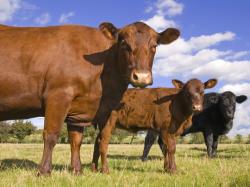Canada's Meat Processing Industry Welcomes Food Safety Controls At XL Lakeside
October 25, 2012 | 4 min to read

OTTAWA – The Board of Directors of the Canadian Meat Council welcomes confirmation that the review of meat hygiene, handling and sanitation procedures at XL Lakeside in Brooks, Alberta has been completed and that the Canadian Food Inspection Agency (CFIA) has verified food safety controls are being implemented effectively and consistently. The announcement was made earlier today by the Canadian Food Inspection Agency. As indicated by XL Foods and JBS USA on October 17, the XL Lakeside facility will be managed by JBS when it resumes operations.
The Canadian meat industry cooperates with the Canadian Food Inspection Agency in the review of food safety incidents and investigations to gain insight into causes and to identify and implement measures to prevent recurrence. For this purpose, meat processors have created an E. coli Working Group to review lessons revealed by the initial CFIA report on the XL Lakeside recall, as well as to evaluate potential new tools that would assist in ensuring Canadian meat products remain among the safest in the world. Also, Canada’s meat processors support fully and will contribute actively to the recently announced Health Canada review of the science pertaining to the safe handling and cooking of mechanically tenderized beef products. In addition, the Canadian Meat Council will organize educational workshops open to member as well as non-member participants on the best management practices and the most effective tools for the control of E. coli. Further initiatives by the industry may follow after the CFIA has completed and released its final report on the circumstances that gave rise to the XL Lakeside recall.
Canadian Meat Safety Standards and Performance are Rising Continuously
“The Canadian meat inspection system is among the most stringent in the world and this country’s meat processors work cooperatively with Health Canada and the Canadian Food Inspection Agency to ensure that the highest standards for food safety are maintained,” stated Canadian Meat Council Chair Ray Price. “In the case of E. coli 0157:H7, the industry is committed to preventing the contamination of beef products through comprehensive food safety management systems in beef slaughtering and processing establishments,” Price added. According to the Public Health Agency of Canada, the rate of E. coli 0157 infection from all sources, including improperly cooked beef, fell from 2.99 per 100,000 Canadians in 2006 to 1.39 per 100,000 in 2011.
Food safety management systems incorporate a series of “hurdles” in the processing system. Each hurdle contributes to a decrease in the number of bacteria so that the likelihood of pathogens entering the food supply is greatly reduced. Hot water and steam pasteurization of beef carcasses are among the most effective hurdles currently available. Prior to their application, the antibacterial agents that are used have been evaluated for safety and efficacy and approved by Health Canada.
Every lot of beef products destined for the manufacture of ground beef must be tested with a robust sampling and laboratory detection method for the potential presence of E. coli O157:H7. The purpose of the tests is to: (1) verify the effectiveness of the entire process, including the various carcass applications; and (2) ensure the diversion of any lots with detectable levels of the pathogen to either cooking at a temperature that kills the bacteria or to destruction. Laboratory tests also verify the effectiveness of sanitation programs.
Canada’s Food Safety System and Performance are Well Regarded
Meat recalls are rare events in Canada and Canadians should have confidence in Canada's food safety system.
Canada received a top tier ranking of “superior” in both the 2008 and 2010 Johnson- Shoyama Graduate School of Public Policy World Ranking of Food Safety Performance among 17 leading Organization for Economic Cooperation and Development (OECD) countries, including Australia, Austria, Belgium, Canada, Denmark, Finland, France, Germany, Ireland, Italy, Japan, Netherlands, Norway, Sweden, Switzerland, the United Kingdom and the United States.
Every year, Canada exports beef and pork products to more than 120 foreign countries. The food safety agencies of these countries only import meat from those countries in which they have confidence in the food safety system.
Advice to consumers
All raw meat products should be handled with care to prevent cross-contamination of kitchen surfaces and other foods.
In the case of intact whole muscle cuts (non-mechanically tenderized), such as steaks and roasts, bacteria are found only on the surface of these foods. Cooking these products destroys any bacteria present on the outside of these meat cuts. However, when meat is ground, any bacteria present on the surface can be distributed throughout the ground product. That is why it is so important to ensure that ground beef is thoroughly cooked to a core temperature of 71oC. An excellent source of consumer information on beef nutrition and safety can be found at www.canadabeef.ca.
About the Canadian meat industry
The Canadian meat industry is the largest of this country’s food processing sectors with close to 70,000 employees and gross annual sales of pork, beef, veal, lamb and poultry of over $24.1 billion. Last year, Canada exported over $1.3 billion of beef and over $3.2 billion of pork to over 125 countries around the world. The Canadian Meat Council and its members are dedicated to consumer safety and will continue to work directly with CFIA and public health agencies to remain vigilant and proactive, to provide Canadians and our valued international markets the highest level of food safety and quality.
Source: Canadian Meat Council
